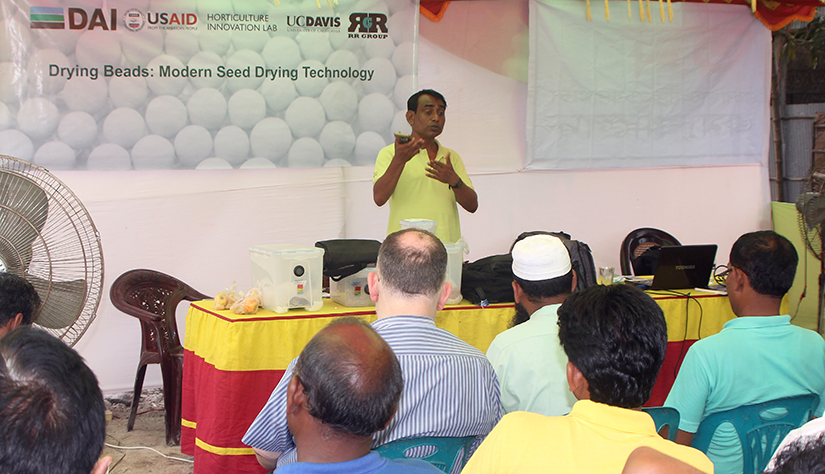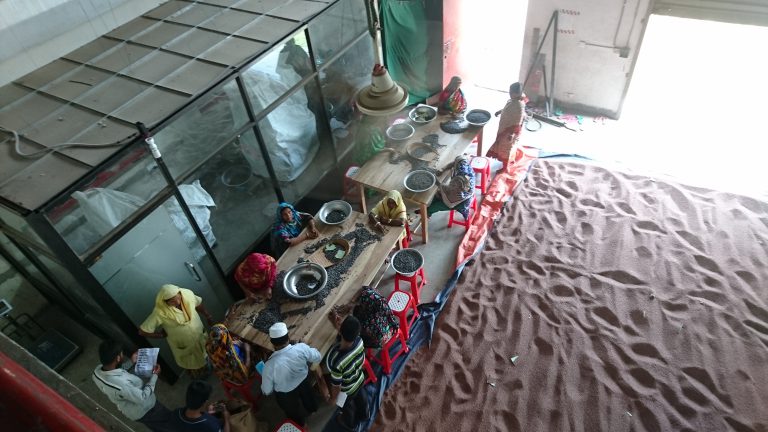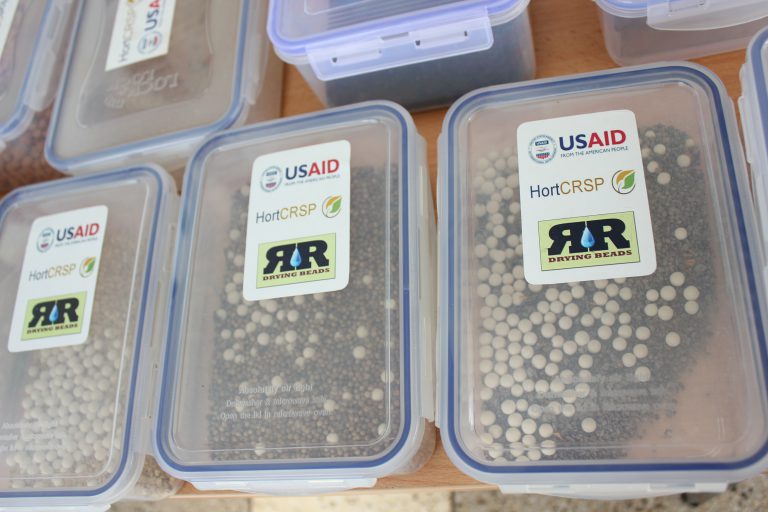
In humid Bangladesh, finding reliable vegetable seed can be a challenge — a situation that can ruin a crop before a farmer’s hard work even begins. But Bangladesh seed companies are rapidly adopting a new technology that can improve seed germination and plant vigor, through improved seed processing and storage. Called “drying beads,” this reusable tool can help seed companies provide farmers with higher quality seed, improving the local seed industry and helping farmers maximize the potential of their own hard work.
Many of the country’s leading vegetable seed companies have adopted drying beads through a multi-part training led by Rhino Research and supported by the Feed the Future Innovation Lab for Horticulture, based at the University of California, Davis. Participating organizations include Lal Teer Seed Limited, Metal Seed, Getco, A. R. Malik & Co., Ispahani Agro Limited, Bangladesh Agricultural Development Corporation and others.
“We concluded that these beads are drying our seeds faster and deeper, obtaining a better quality that results in a longer storage potential, and all this with lesser costs,” said Tabith M. Awal of Lal Teer Seed Limited in Bangladesh. “Therefore Lal Teer made the executive decision to move ahead with implementing these beads for all our seeds and crops as soon as possible.”
This year, more than 200 tons of vegetable seed have been dried and stored with drying beads — helping an estimated 100,000 farmers in Bangladesh access quality seed.
The in-depth training, offered for a week at a time and repeated 3-7 times over several months, has focused on 14 seed leaders in Bangladesh. They have trained more than 70 employees, who in turn have trained more than 500 seed production farmers in how to use drying beads and maintain seed quality.


How reusable drying beads work in Bangladeshi seed systems
In a sealed container, the zeolite-based drying beads can dry seeds to very low moisture contents — preventing mold growth, restricting insect habitation, and preserving seed quality. The beads can be regenerated in an oven for repeated use.
Seed farmers in Bangladesh first dry their seed in the sun — and that’s where many of them stop (a survey showed about 22% also used fan drying and 8% used heated air). Companies that have adopted drying beads use them in containers to transport the seed from the farmer to company storage, where they can collect the fully dried seeds and return a container with fresh drying beads to the field.
Horticulture Innovation Lab researchers have previously shown drying beads are effective for seed storage, and developed an overarching “dry chain” concept. “Make it dry, keep it dry” is the motto of the dry chain, which specifies how to maintain quality and safety of dried products — not just seed.
“What is really remarkable is the explosion of different ideas in how to use the drying beads,” said Johan Van Asbrouck of Rhino Research. “But we are starting with seeds, maximizing the potential of the crop at a farmer’s level. If you don’t have quality seed, you start penalized and will not have the crop you could.”
Photo at top: Korshed A. Chowdhury leads a training on using drying beads to process seed with a group of farmers, seed company employees and agricultural workers in May 2017.
This article is also available as a one-page success story fact sheet (PDF).
More information:
- Project information: Scaling up drying technologies for seed in Bangladesh
- Technology fact sheet: Drying beads save high quality seeds
- Related blog post with video: How drying beads work, in a new SciDev.Net video
- Related blog post: ‘Dry chain’ partnership helps farmers store seed better
- Drying beads website
